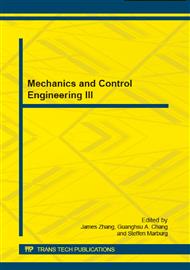[1]
C. Rouquette, Bilan ´energetique de la france pour 2011, p.77–149, (2012).
Google Scholar
[2]
J. Carassus, Comparaison internationale batiment et energie, Rapport intermediaire, PREBAT, Programme de recherche et d'experimentation sur l'energie et le batiment, ADEME, CSTB, PUCA, Paris (2006).
Google Scholar
[3]
B. Richter, D. Goldston, G. Crabtree, L. Glicksman, D. Goldstein, D. Greene, D. Kammen, M. Levine, M. Lubell, M. Savitz et al., Energy future: Think efficiency, Journal of American Physical Society: College Park, MD (2008).
DOI: 10.1103/revmodphys.80.s1
Google Scholar
[4]
M. Fuchs, T. Dixius, J. Teichmann, M. Lauster, R. Streblow, and D. Muller, Evaluation of interactions between buildings and district heating networks, 13th Conference of International Building Performance Simulation Association, Chambery, France, August 26-28; (2013).
DOI: 10.26868/25222708.2013.1284
Google Scholar
[5]
M. Pirouti, Modelling and analysis of a district heating network, PhD thesis, Cardiff university, (2013).
Google Scholar
[6]
J. Gustafsson, J. Delsing and J. v. Deventer , Improved district heating substation efficiency with a new control strategy, Journal: applied energy, p.1996 – 2004, (2010).
DOI: 10.1016/j.apenergy.2009.12.015
Google Scholar
[7]
K. Holmgren, Role of a district-heating network as a user of waste-heat supply from various sources – the case of Goteborg, Journal: applied energy, N. 12 p.1351 – 1367, (2006).
DOI: 10.1016/j.apenergy.2006.02.001
Google Scholar
[8]
Connolly, David, et al. Heat Roadmap Europe 2050., (2013).
Google Scholar
[9]
Ala Hasan, Jarek Kurnitski, Kai Jokiranta, A combined low temperature water heating system consisting of radiators and floor heating, Energy and Buildings, Volume 41, Issue 5, May 2009, Pages 470-479, ISSN 0378-7788, Keywords: Low temperature heating; Water radiator; Floor heating; Thermal comfort.
DOI: 10.1016/j.enbuild.2008.11.016
Google Scholar
[10]
Baoping Xu, Lin Fu, Hongfa Di, Dynamic simulation of space heating systems with radiators controlled by TRVs in buildings, Energy and Buildings, Volume 40, Issue 9, 2008, Pages 1755-1764, ISSN 0378-7788, http: /dx. doi. org/10. 1016/j. enbuild. 2008. 03. 004.
DOI: 10.1016/j.enbuild.2008.03.004
Google Scholar
[11]
The Swedish District Heating Association, district energy – a path towards eco-efficient cities, Report (2009).
Google Scholar
[12]
Prívara, Samuel, et al. Model predictive control of a building heating system: The first experience., Energy and Buildings 43. 2 (2011): 564-572.
DOI: 10.1016/j.enbuild.2010.10.022
Google Scholar


